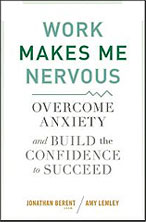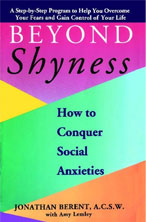Anxiety and Anxiety Symptoms
Anxiety can range from mild uneasiness and worry to severe panic. While short bursts of anxiety at a reasonable level can be beneficial – they may motivate a person to perform better – chronic or severe anxiety can be overwhelming and debilitating, causing academic, professional and/or social dysfunction. Anxiety stemming from fears occuring in social situations is called social anxiety.
Anxiety is a fear response comprised of interlocking elements of cognition, emotional/psychological symptoms and physiological symptoms/effects.
Cognition of Anxiety
What a person thinks, determines behavior, emotion, and often, mood. It is often directly related to physiological dynamics.
Emotional and Psychological Anxiety Symptoms
Emotional and psychological anxiety symptoms may include the following sensations/states of being listed below.
- Avoidance
- Obsessive worrying
- Apprehension, dread, discomfort
- Nervousness or feeling “at edge”
- Fearful anticipation
- Restlessness, “antsiness” or feeling “stressed out”
- Irritability
- Confusion
- Self-consciousness
- Strong desire to escape or run away
- Fear that you are “going crazy”
- An inability to focus or concentrate
- High-pitch alertness or hyper-vigilance
Depression is often a by-product of anxiety.
Physiological Anxiety Symptoms
Anxiety may be manifested by these physiological anxiety symptoms which may also be exhibited during a panic attack:
- Heart palpitations, heart racing or pounding
- Nausea
- Rapid shallow breathing (hyperventilation) or shortness of breath
- Stomach or chest pains
- Butterfly feelings in stomach or queasiness
- Feeling faint
- Sweating
- Frequent urination or diarrhea
- Loss of appetite
- Headaches
- Dizziness
- Muscle tension or muscle aches
- Tremors, jitters
- Insomnia
- Loss of interest in sex
Anxiety: self-feeding/self-perpetuating
For most individuals suffering from anxiety, the condition is self-perpetuating. The stress of constant worrying, for example, feeds on itself and stimulates deeper physiologic symptoms. These physical symptoms feed worrying, and the cycle continues and spreads: the pattern of worrying and physiological symptoms bring on depression. Depression is often treated with medication only, which, since it is not the root of the problem, does not resolve it. With a constant cycle of physiological anxiety symptoms feeding psychological anxiety symptoms and vice versa, the problem of anxiety worsens.
Self-Help and Treatment Options
- Free Audio CD from Social-Anxiety.com
- Social Anxiety: The Untold Story
- Beyond Shyness: How To Conquer Social Anxieties
- Work Makes Me Nervous
- Comprehensive Self-Therapy Audio Program
- Public Speaking Anxiety Self-Therapy Audio Program
- “Warm Hands Cool Face” A Self-Help Clinical Program for Blushing Anxiety & Erythrophobia
- The Berent Method: High Performance Therapy for Social-Anxiety
- Telephone/skype therapy available worldwide
- Selective Mutism Seminar Audio CD/MP3 Program
- Self-Help Program for Parents of Children with Selective Mutism
- The Sociability Questionnaire
- Tip of the Month Club
- Social Therapy and The Learning Disabled
- Free Parent Addiction Survey


